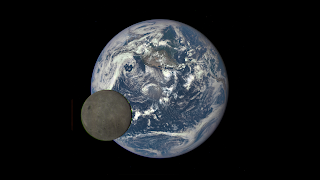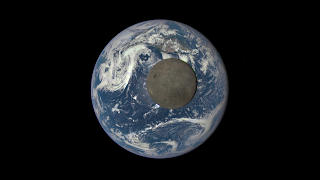A NASA camera aboard the Deep Space Climate Observatory (DSCOVR) satellite captured a unique view of the Moon as it moved in front of the sunlit side of Earth last month. The series of test images shows the fully illuminated “dark side” of the moon that is never visible from Earth.
The images were captured by NASA’s Earth Polychromatic Imaging Camera (EPIC), a four megapixel CCD camera and telescope on the DSCOVR satellite orbiting 1 million miles from Earth. From its position between the sun and Earth, DSCOVR conducts its primary mission of real-time solar wind monitoring for the National Oceanic and Atmospheric Administration (NOAA).
DSCOVR, 1 million miles from Earth
July 16,, 2016
Image Credit: NASA/NOAA
Explanation from: http://svs.gsfc.nasa.gov/cgi-bin/details.cgi?aid=11971























The Earth rotation speed is constant and all surfaces are exposed to the Sun. Does the strong gravitational or magnetic forces of the Earth prevent the Moon from rotating and exposing all sides to the Earth? On other hand, does the moon attraction cause the Earth rotation and stabilize it's tilt position in relationship to the Sun's gravitational pull? This has puzzling to Scientist and Physists for centuries without a answer. There is a specific reason unknown to the Scientific Community.
ReplyDeleteBeautiful period!
ReplyDeleteI love reading about the galaxy and the universe, and planets, is fantastic!
ReplyDeleteFantastisch
ReplyDelete